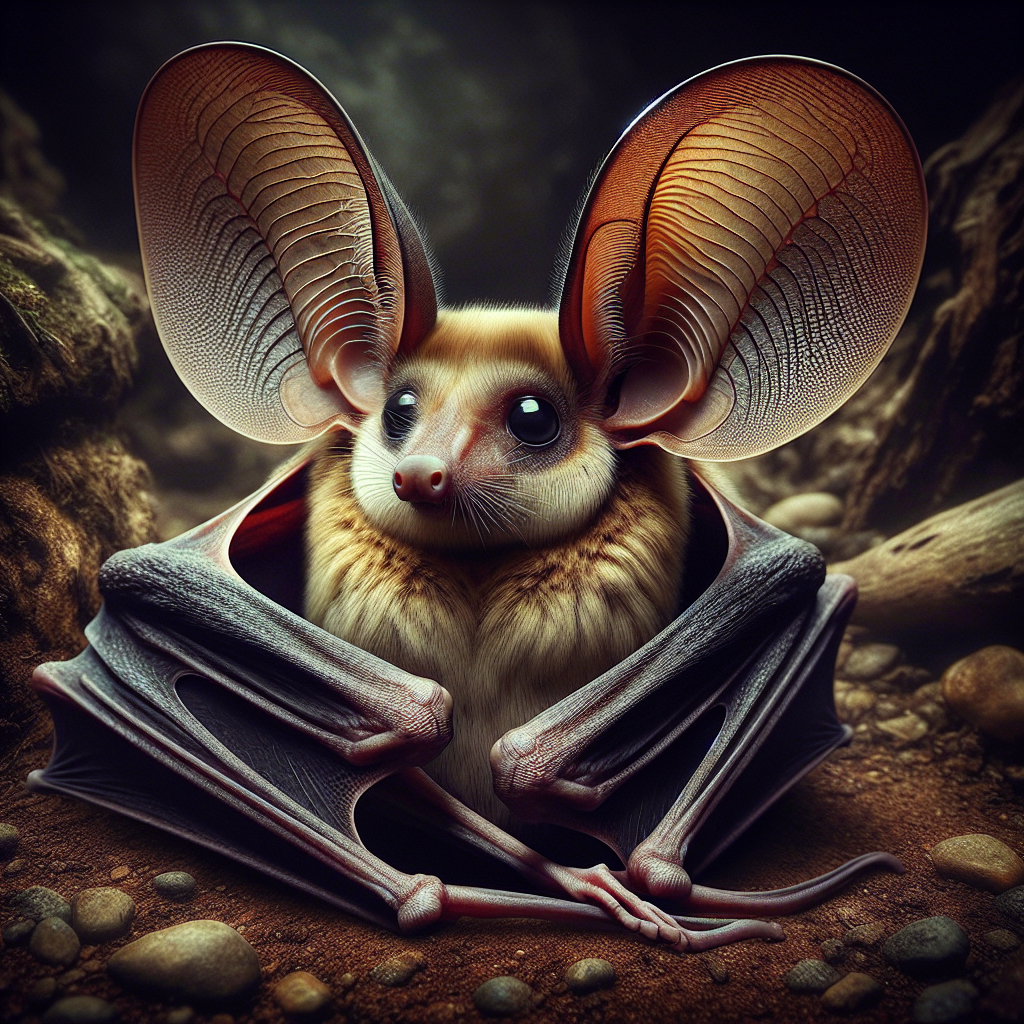The Large-Eared Horseshoe Bat: Echoes of Evolution
Have you ever wondered about the wonders of nature fluttering quietly through the night? Allow me to illuminate the extraordinary world of the Large-Eared Horseshoe Bat, a fascinating creature whose very design speaks of the genius lurking within the shadows of our forests and caves. Known scientifically as Rhinolophus philippinensis, this bat raises the bar for nature's most wondrous adaptations.
What Makes the Large-Eared Horseshoe Bat Special?
The Large-Eared Horseshoe Bat is a charismatic member of the Rhinolophidae family, a lineage famous for its unique nasal structure that resembles a horseshoe. The species is native to parts of Asia, prominently found in countries like the Philippines, Indonesia, and Malaysia. It's renowned not only for its elegant echolocation abilities but also for the conspicuously large and expressive ears that give it quite an enigmatic appearance.
Dating back thousands of years, these nocturnal foragers have been perfecting their craft of navigating the night skies. Their primary habitats include humid tropical forests and caves, environments that provide abundant insect prey. But what's so riveting about these bats isn't just where they live – it's how they've evolved to thrive in these niches.
Nature’s Perfect Listeners
The name Large-Eared Horseshoe Bat doesn’t disappoint when it comes to ear sizes! These bats have large, fleshy ears that are integral to their survival. But why the size? It's all about the art of echolocation – a technique that’s akin to superhuman sonar. By emitting ultrasonic calls that bounce off objects, they can create an auditory map of their surroundings, allowing them to pinpoint flying insects with surgical precision.
This adaptation is nothing short of remarkable. The detailed sound waves help them hunt in complete darkness, a time when their tiny eyes wouldn’t do them much good. So, while the night might seem daunting to some creatures, to our bat friends, it’s simply another bustling world full of opportunities.
Evolution’s Mastery in Design
The horseshoe-shaped structure around the nose, called a ‘noseleaf’, acts like a satellite dish, directing and focusing sound waves. The evolutionary path that led to the noseleaf and the large ears showcases nature's unyielding pursuit of perfection. This combination not only facilitates communication within the species but also enhances their auditory prowess. Remarkable, isn't it?
Speaking of evolution, the Large-Eared Horseshoe Bat also serves as a fascinating study subject for evolutionary biologists, as their diverse adaptations provide clues about how various environmental pressures shape sensory systems across generations.
An Indicator of Environmental Health
Bats, including the Large-Eared Horseshoe Bat, are excellent indicators of environmental health. Their presence signifies a balanced ecosystem with healthy insect populations, a vital element of any thriving habitat. As they primarily feast on insects, these bats play a crucial role in controlling insect populations, indirectly aiding in the protection of crops and reducing the need for chemical pesticides.
Moreover, these bats contribute to seed dispersal and pollination. As they flit from flower to flower, unknowingly participating in a dance that sustains biodiversity, they ensure the propagation of numerous plant species.
Conservation: A Global Responsibility
Unfortunately, like many other creatures in today’s fast-paced world, they face threats from habitat loss, deforestation, and human-wildlife conflicts. Conservationists are striving to ensure their continued survival, emphasizing the need to preserve their natural habitats. Efforts include habitat restoration, legal protection, and public education about the crucial roles these bats play in the ecosystem.
Here’s where you, a fellow lover of nature, come in. By supporting conservation initiatives and spreading awareness about gentle creatures like the Large-Eared Horseshoe Bat, you're not just preserving a species, but also the ecological harmony they maintain.
Fascination Isn't Just for Scientists
If you're feeling inspired to learn more, perhaps consider participating in a bat watching expedition, or even lending your voice to community science projects. Many citizen science programs allow everyday enthusiasts to contribute to research and conservation efforts.
The Large-Eared Horseshoe Bat serves as a beacon of how much more there is left to discover in the world. We live in an era where technology and science can allow anyone to contribute to understanding and preserving nature and its mysterious denizens. And isn't that a wonderful thought?

